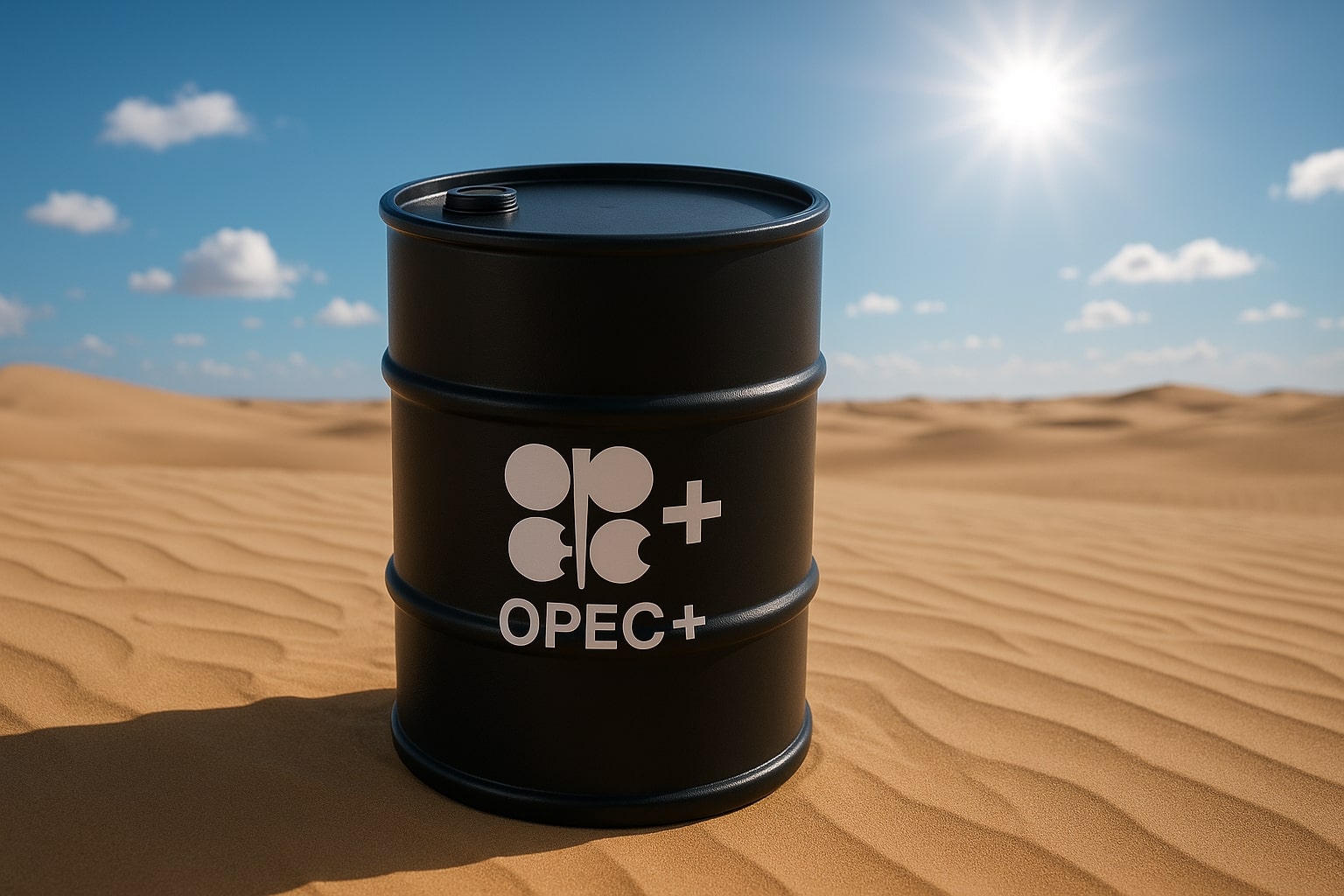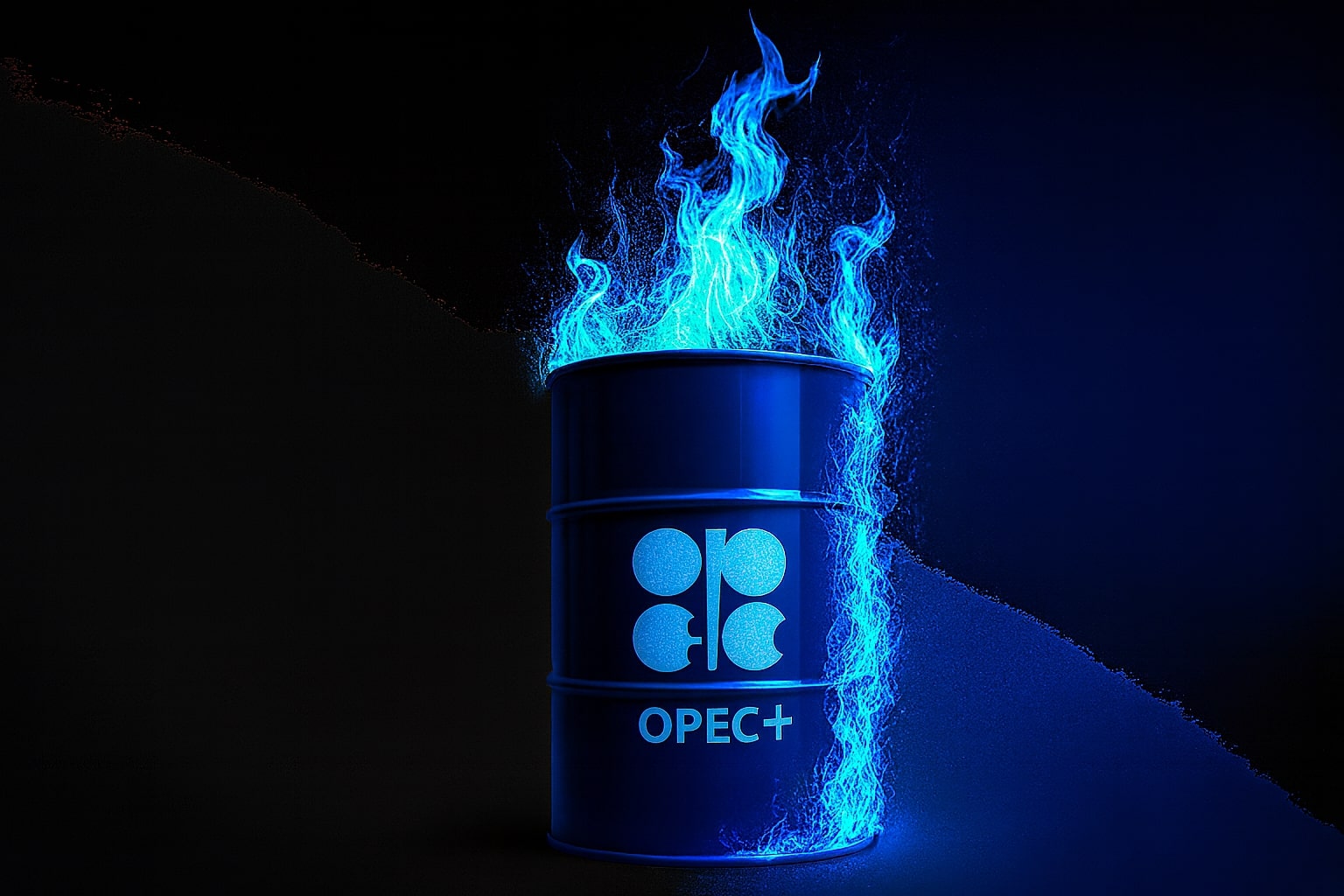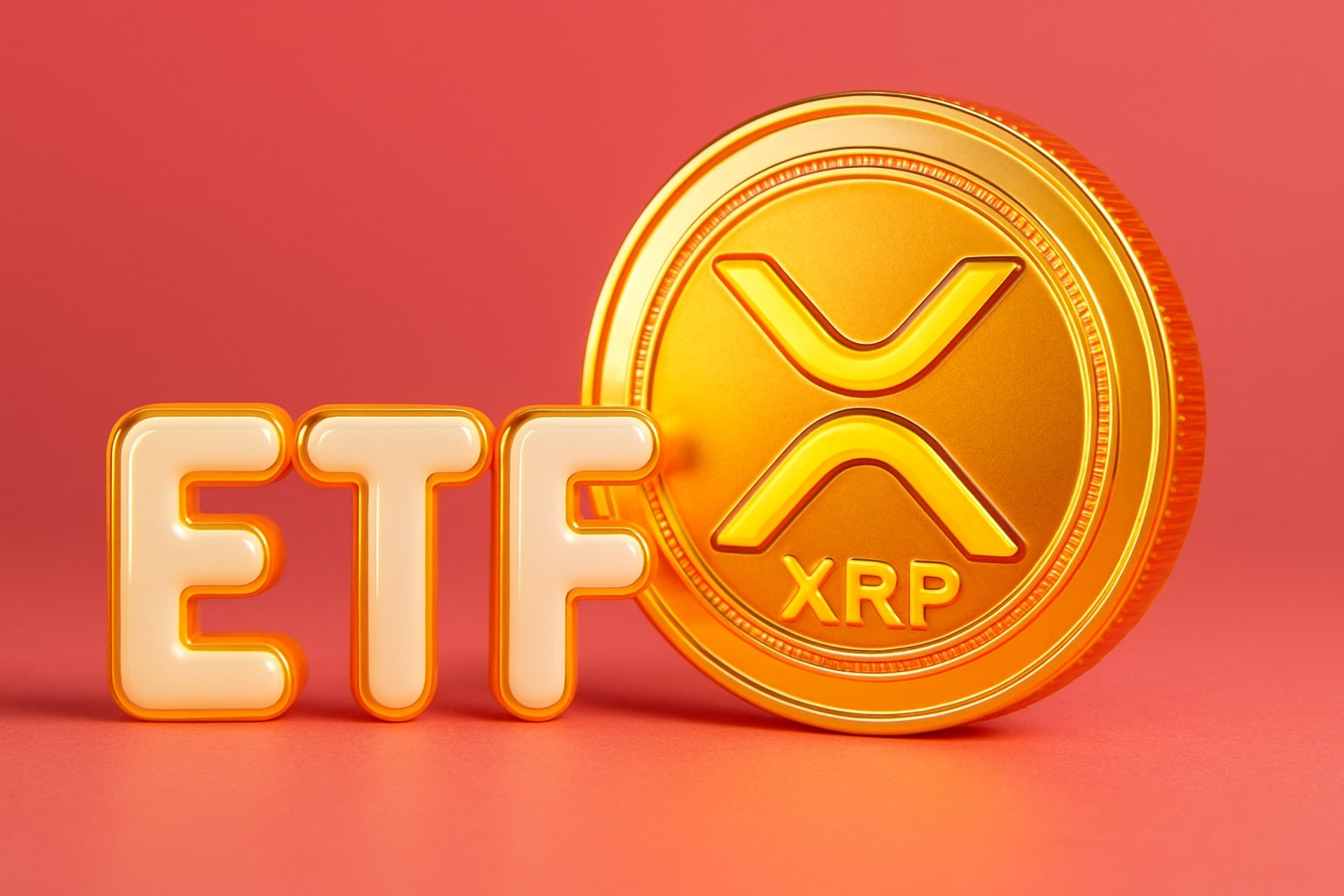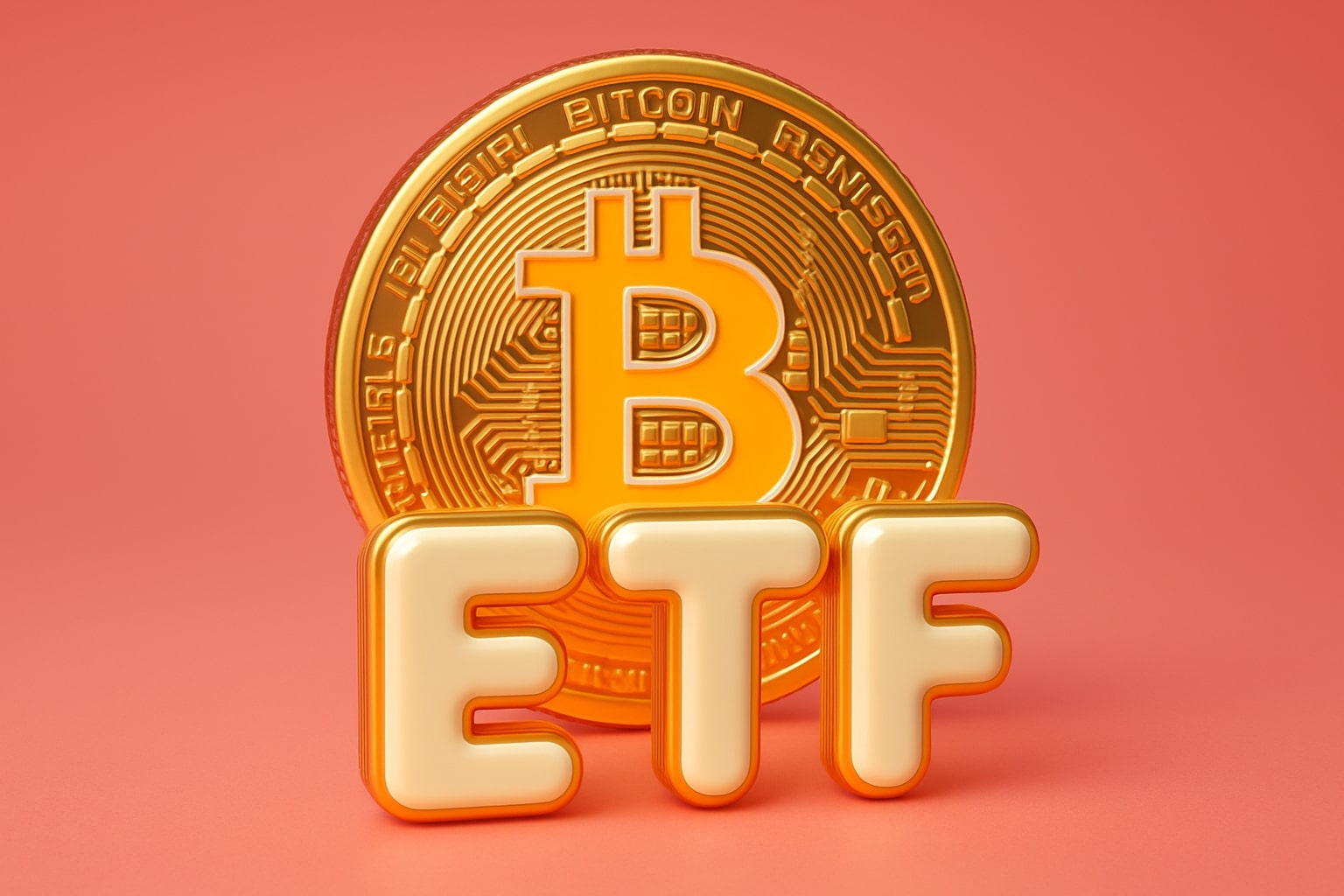
Oil Price Forecast – WTI at $63.91 and Brent at $67.57 as OPEC+ Considers New Output Hike
OPEC+ supply gains, Russian price caps, and weak U.S. demand drive crude lower. Traders weigh $58 WTI risk versus geopolitical shocks that could lift prices | That's TradingNEWS
Oil Price Price – WTI (CL=F) and Brent (BZ=F) Struggle as OPEC+ Debates Supply Hike Amid Oversupply Risks
WTI and Brent Retreat on OPEC+ Supply Fears
Oil markets entered September under renewed pressure, with WTI crude (CL=F) sliding to $63.91 per barrel and Brent crude (BZ=F) retreating to $67.57, both down more than 2% intraday. The pullback followed reports that OPEC+ members are considering raising production targets at the upcoming September 7 meeting. The group, which still has about 1.65 million barrels per day of voluntary cuts in reserve, may tap into this buffer earlier than scheduled, shifting strategy back toward market share instead of price defense. Traders see this as a bearish tilt that could push the market into surplus by late 2025 unless countered by strong demand growth.
OPEC Production Dynamics and Market Sensitivity
Fresh surveys show OPEC crude output rising by 400,000 barrels per day in August, with total group production hitting 28.55 million bpd. Saudi Arabia accounted for over half of the increase, restoring barrels previously curbed. The United Arab Emirates, Nigeria, and Libya also contributed to the month-on-month gains. Kazakhstan overshot its quota by more than 2% while Iraq boosted exports despite disputes with the Kurdistan Regional Government. These developments underscore the difficulty of enforcing compliance when oil trades above $60, incentivizing members to maximize revenues. Market reaction was swift, with Brent slipping below $68 immediately after the survey release, highlighting how even incremental OPEC supply adjustments ripple through benchmarks.
Geopolitical Pressures, Sanctions, and Russia’s Oil Strategy
Geopolitics added another layer of risk this week. A new EU-imposed price cap on Russian crude lowered the ceiling to $47.6 per barrel, down from the previous $60. Moscow has already discounted exports to India and Asia to stay competitive, with Indian refiners saving an estimated $12.6 billion in import costs so far in 2025 due to these discounts. U.S. sanctions have also intensified against networks disguising Iranian oil as Iraqi crude, constraining flows but creating alternative trade routes through Asia. While sanctions reduce headline exports from Iran and Russia, the rerouted barrels keep physical supply flowing, limiting the bullish impact.
Demand Signals and Macro Weakness
The demand side showed cracks as well. U.S. job openings fell to 7.18 million in July, below expectations of 7.37 million, feeding into recession fears and weighing on consumption outlooks. Manufacturing activity in the U.S. contracted for a sixth consecutive month, intensifying concerns about industrial oil demand. Europe’s inventories remain above seasonal averages, further dampening near-term bullish cases. China continues to absorb discounted Russian crude, shielding state-owned refiners like Petrobras from U.S. tariff fallout, but broader demand growth remains patchy outside Asia.
WTI Technical Levels and Trading Structure
WTI crude (CL=F) is testing critical technical markers. The $65 zone aligns with the 50-day moving average, acting as a battleground for bulls and bears. Tuesday’s session brought heavy volume into this area, but sellers regained control by Wednesday, showing a lack of conviction for sustained upside. Support is visible around $63.50–$64.00, while resistance sits overhead at $67. A decisive break below $63 would expose WTI to April’s low near $58, a level last tested when oversupply concerns peaked earlier this year. Brent (BZ=F) shows a similarly tight range, with $67 acting as near-term support and resistance building around $69.50–$70, where the 200-day EMA is located.
Read More
-
PPA ETF at $154: Can This Defense ETF Keep Beating ITA and SPY?
14.12.2025 · TradingNEWS ArchiveStocks
-
XRP ETFs XRPI and XRPR Pull In $975M While XRP-USD Fights To Hold $2
14.12.2025 · TradingNEWS ArchiveCrypto
-
Natural Gas Price Forecast: NG=F Hits $4.11 As Warm Winter Outlook Puts $3.913 Support At Risk
14.12.2025 · TradingNEWS ArchiveCommodities
-
USD/JPY Price Forecast - Dollar to Yen Can BoJ’s 0.75% Shock Break The 155–158 Range?
14.12.2025 · TradingNEWS ArchiveForex
Corporate and Institutional Reactions
Oil’s weakness is reshaping corporate strategies. Equinor (NYSE:EQNR) was downgraded by Morgan Stanley to Underweight, with the bank highlighting that if Brent averages $60 in 2026, Equinor’s free cash flow could drop to $2.7 billion, barely covering its $4 billion dividend outlay. Buybacks are unlikely under that scenario, pressuring the stock. Meanwhile, BP (NYSE:BP) and Eni (BIT:ENI) confirmed a $5 billion investment in Angola to redevelop fields after national output fell below 1 million bpd, a move aimed at shoring up long-term supply despite weak spot prices. In Iraq, BP has also launched a $25 billion project in Kirkuk, targeting an extra 50,000–100,000 bpd of production in coming years, reinforcing that supermajors are still expanding capacity even as the market debates oversupply.
Outlook and Market Balance Risks
The oil market’s balance hangs on OPEC+ decisions this weekend. If the group authorizes additional output increases beyond the 2.2 million bpd already scheduled for September, the market could enter a pronounced surplus, with inventories swelling through 2026. Conversely, renewed geopolitical escalation—from Houthis targeting tankers in the Red Sea to new Trump administration sanctions on Russia and Iran—could restore a geopolitical premium that has recently faded. With WTI trading at $63.91 and Brent at $67.57, oil remains in bearish short-term territory, but its sensitivity to political shocks and supply compliance makes the outlook highly volatile.



















